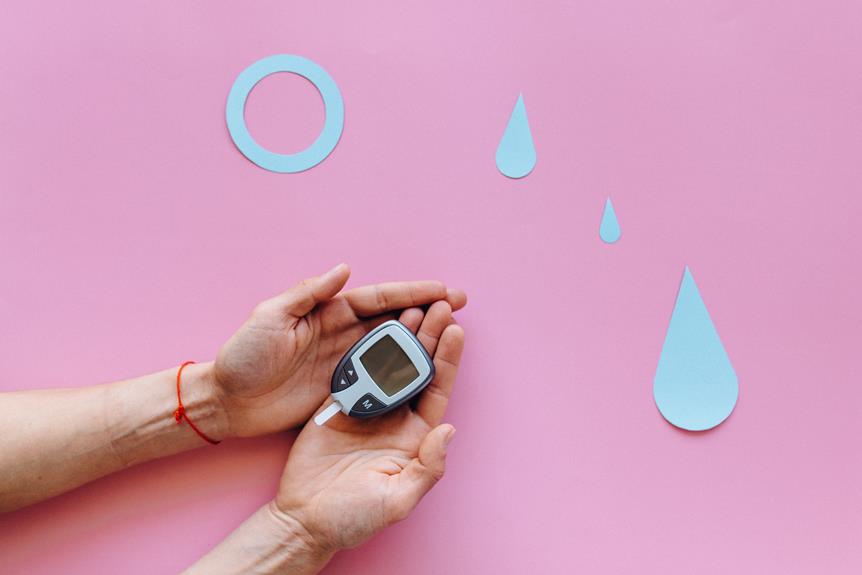What Is Woman Urinary Incontinence Prevention and Lifestyle Changes

Discover the empowering journey towards preventing and managing urinary incontinence in women through lifestyle changes.
In this article, we explore the impact of lifestyle choices on urinary incontinence, from exercise and dietary modifications to bladder training techniques and stress management.
By implementing these strategies, women can regain control and live their lives to the fullest.
Join us as we delve into the world of urinary incontinence prevention and provide valuable insights for those seeking to serve others in this field.
Key Takeaways
- Weakened pelvic floor muscles and nerve damage are common causes of urinary incontinence in women.
- Making dietary changes, such as avoiding bladder irritants and eating fiber-rich foods, can help manage urinary incontinence.
- Regular exercise, including pelvic floor exercises, can improve bladder control and minimize urinary leaks.
- Stress management techniques and lifestyle modifications, such as maintaining a healthy weight, can reduce the occurrence of urinary leaks.
Understanding Urinary Incontinence
In order to effectively manage urinary incontinence, it is crucial for healthcare professionals to have a comprehensive understanding of the various causes and risk factors associated with this condition.
Urinary incontinence can be caused by a variety of factors, including weakened pelvic floor muscles, nerve damage, hormonal changes, and urinary tract infections. Additionally, certain risk factors such as age, obesity, pregnancy, and childbirth can increase the likelihood of developing urinary incontinence.
Understanding these causes and risk factors is essential for determining appropriate treatment options. Treatment for urinary incontinence may include lifestyle modifications, pelvic floor exercises, medication, or in some cases, surgery. By addressing the underlying causes and risk factors, healthcare professionals can develop personalized treatment plans that effectively manage urinary incontinence.
Transitioning into the subsequent section about the impact of lifestyle on urinary incontinence, it is important to consider how lifestyle choices can both contribute to and alleviate this condition.
The Impact of Lifestyle on Urinary Incontinence
Lifestyle choices can have a significant impact on the occurrence and severity of urinary incontinence.
Diet plays a role, as certain foods and beverages can irritate the bladder and lead to leakage.
Regular exercise can help strengthen the pelvic floor muscles and improve bladder control.
Additionally, stress management techniques can be effective in reducing episodes of urinary leaks.
Diet and Incontinence
Research suggests that dietary choices play a crucial role in managing urinary incontinence and improving bladder control. Making specific dietary recommendations can help individuals prevent and alleviate symptoms of urinary incontinence. Here are three important dietary tips to consider:
- Increase fiber intake: A high-fiber diet can help prevent constipation, which can contribute to urinary incontinence. Foods such as fruits, vegetables, whole grains, and legumes are rich in fiber and should be included in daily meals.
- Stay hydrated: Drinking an adequate amount of water is essential for maintaining bladder health. Dehydration can lead to concentrated urine and irritate the bladder, worsening incontinence symptoms. It is recommended to drink at least eight glasses of water per day.
- Limit bladder irritants: Certain foods and beverages can irritate the bladder and worsen urinary incontinence. These include caffeine, alcohol, spicy foods, citrus fruits, and artificial sweeteners. Avoiding or reducing the intake of these bladder irritants can help manage symptoms.
In addition to dietary recommendations, natural remedies such as pelvic floor exercises and maintaining a healthy weight can also contribute to improved bladder control and overall well-being.
Exercise and Bladder Control
Regular physical activity, including targeted exercises for the pelvic floor muscles, can significantly enhance bladder control and reduce the frequency and severity of urinary incontinence episodes. Bladder control techniques, such as pelvic floor strengthening exercises, are crucial for individuals seeking to improve their quality of life and prevent embarrassing leaks.
Pelvic floor muscles play a vital role in supporting the bladder and maintaining continence. By incorporating exercises that specifically target these muscles, individuals can improve their bladder control and minimize the risk of urinary leaks. Engaging in regular physical activity also promotes overall health and well-being, which can further contribute to better bladder control.
However, it is important to note that stress and certain physical activities can trigger urinary leaks. Therefore, understanding how stress affects bladder function is essential in effectively managing urinary incontinence.
Stress and Urinary Leaks
Understanding the relationship between stress and urinary leaks is crucial for developing effective interventions and improving the quality of life for individuals with urinary incontinence. Stress urinary incontinence (SUI) is a common form of urinary incontinence that occurs when there is increased pressure on the bladder, leading to involuntary urine leakage. While the exact causes of SUI are not fully understood, there are several factors that can contribute to its development, including pregnancy and childbirth, obesity, and hormonal changes.
To address the issue of stress urinary leaks, it is important to consider various treatment options. Here are three key interventions that can help manage and alleviate symptoms of SUI:
- Pelvic floor muscle exercises (Kegel exercises): Strengthening the muscles that support the bladder and urethra can help improve bladder control and reduce leakage episodes.
- Lifestyle modifications: Making certain lifestyle changes, such as maintaining a healthy weight, avoiding bladder irritants (e.g., caffeine and alcohol), and quitting smoking, can significantly reduce the frequency and severity of urinary leaks.
- Medical interventions: In some cases, medical interventions may be necessary. These can include medications, such as anticholinergics, or surgical procedures, such as sling procedures or bladder neck suspension, to provide additional support to the bladder and reduce urinary leakage.
Exercise and Urinary Incontinence Prevention
Exercise plays a crucial role in the prevention of urinary incontinence, particularly through effective pelvic floor exercises. These exercises strengthen the muscles that support the bladder and urethra, reducing the risk of leakage.
Additionally, engaging in regular physical activity can help maintain a healthy weight, which is another important factor in managing urinary incontinence.
Effective Pelvic Floor Exercises
In order to optimize the prevention of urinary incontinence in women, it is crucial to explore the efficacy of pelvic floor exercises and their impact on overall pelvic health. Pelvic floor strengthening, also known as kegel exercises, have been widely recommended by healthcare professionals as a non-invasive and effective approach to prevent and treat urinary incontinence in women. These exercises target the muscles that support the bladder, uterus, and rectum, helping to improve their strength and control.
Here are three key benefits of pelvic floor exercises:
- Improved bladder control: Regularly performing pelvic floor exercises can help strengthen the muscles that control the release of urine, reducing the risk of urinary leakage and incontinence episodes.
- Enhanced sexual function: Strong pelvic floor muscles can lead to increased sexual satisfaction by improving vaginal tone and enhancing sexual sensations.
- Prevention of pelvic organ prolapse: Pelvic floor exercises can help prevent or reduce the risk of pelvic organ prolapse, a condition where the bladder, uterus, or rectum may bulge into the vagina due to weakened pelvic floor muscles.
Impact of Physical Activity
Engaging in regular physical activity has been shown to have a positive impact on the prevention of urinary incontinence. Studies indicate that it can strengthen the pelvic floor muscles and improve overall bladder control.
However, it is important to consider the impact of medication and psychological factors in the management of urinary incontinence. Certain medications, such as diuretics or sedatives, can worsen urinary incontinence symptoms. Additionally, psychological factors, such as stress or anxiety, can also contribute to the development or exacerbation of urinary incontinence.
Therefore, it is crucial to address these factors in conjunction with physical activity to effectively manage urinary incontinence. By considering the impact of medication and psychological factors, healthcare professionals can develop a comprehensive approach to urinary incontinence prevention and management.
Transitioning into the subsequent section about dietary changes for urinary incontinence management, it is essential to explore how nutrition can further support individuals in their journey towards better bladder control.
Dietary Changes for Urinary Incontinence Management
A nutrient-rich diet can play a crucial role in the management of urinary incontinence. Proper nutrition not only supports overall health but also contributes to bladder health, hydration, and incontinence control. Here are three important dietary changes that can help individuals manage urinary incontinence effectively:
- Increase fluid intake: Staying hydrated is essential for maintaining bladder health and preventing urinary tract infections, which can worsen incontinence symptoms.
- Avoid bladder irritants: Certain foods and beverages, such as caffeine, alcohol, acidic fruits, and spicy foods, can irritate the bladder and exacerbate incontinence. Limiting or avoiding these items can help reduce symptoms.
- Eat fiber-rich foods: A diet high in fiber can prevent constipation, which can put pressure on the bladder and lead to urinary incontinence. Incorporating whole grains, fruits, vegetables, and legumes can promote regular bowel movements and improve bladder control.
By making these dietary changes, individuals can take an active role in managing their urinary incontinence and improving their overall quality of life.
Transitioning into the subsequent section, bladder training techniques can further enhance control and reduce incontinence episodes.
Bladder Training Techniques for Control
Two effective bladder training techniques for achieving better control over urinary incontinence include timed voiding and urge suppression.
Timed voiding involves creating a schedule for emptying the bladder at set intervals throughout the day, regardless of the urge to urinate. This technique helps to train the bladder to hold urine for longer periods and reduces the frequency of accidents.
On the other hand, urge suppression involves using relaxation techniques and distraction techniques to delay the urge to urinate when it occurs. This technique helps to retrain the brain to have better control over the bladder and prevent urinary leakage.
Both techniques require consistency and patience to see results. By incorporating these bladder control techniques into daily routines, individuals can take proactive steps towards urinary leakage prevention and regain confidence in their daily activities.
Managing Stress and Urinary Incontinence
One effective strategy for managing stress and urinary incontinence is to practice relaxation techniques, such as deep breathing or meditation, which can help reduce anxiety and improve bladder control. When it comes to managing anxiety, incorporating relaxation techniques into your daily routine can be incredibly beneficial.
Here are three key benefits of practicing relaxation techniques for managing anxiety and urinary incontinence:
- Stress reduction: Relaxation techniques can help calm the mind and body, reducing the overall stress levels that can contribute to urinary incontinence.
- Improved bladder control: By practicing relaxation techniques, individuals can learn to better control their bladder muscles, reducing the frequency and urgency of urinary incontinence episodes.
- Enhanced overall well-being: Regular practice of relaxation techniques can lead to improved overall well-being, including better sleep, increased energy levels, and reduced anxiety.
Seeking Professional Help for Urinary Incontinence
Seeking professional help for urinary incontinence is essential to receive proper diagnosis and develop an effective treatment plan. Professional intervention can provide valuable insight into the underlying causes of urinary incontinence and help identify appropriate treatment options. There are various treatment options available, depending on the severity and type of urinary incontinence. These may include lifestyle changes, pelvic floor exercises, medications, and in some cases, surgery.
To give you a better understanding, here is a table outlining some common treatment options for urinary incontinence:
| Treatment Options | Description | Pros | Cons |
|---|---|---|---|
| Lifestyle Changes | Modifying diet and fluid intake, weight management, and bladder training. | Non-invasive, can be easily implemented. | May take time to see significant improvement. |
| Pelvic Floor Exercises | Strengthening the pelvic floor muscles through exercises like Kegels. | Effective for stress incontinence, no side effects. | Requires commitment and regular practice. |
| Medications | Prescription drugs to relax the bladder or reduce urinary urgency. | Can provide symptom relief, non-invasive. | Potential side effects, not suitable for everyone. |
| Surgery | Procedures to correct anatomical issues or implant a device to manage incontinence. | Can provide long-term relief, suitable for severe cases. | Invasive, potential risks and complications. |
Frequently Asked Questions
What Are the Common Medical Treatments for Urinary Incontinence?
Medical treatments for urinary incontinence include behavioral therapies, such as pelvic floor muscle exercises and bladder training, as well as medications to relax the bladder muscles. In more severe cases, surgical interventions may be considered.
Are There Any Over-The-Counter Products That Can Help Manage Urinary Incontinence?
There are over-the-counter alternatives and lifestyle changes that can help manage urinary incontinence. These include pelvic floor exercises, weight management, and avoiding bladder irritants. Consulting a healthcare professional is recommended for personalized advice.
Can Hormonal Changes, Such as Menopause, Contribute to Urinary Incontinence?
Hormonal changes, such as menopause, can indeed contribute to urinary incontinence. During menopause, decreased estrogen levels can lead to weakened pelvic muscles and decreased bladder control, increasing the risk of urinary incontinence.
Are There Any Specific Exercises or Physical Therapy Techniques That Can Help Strengthen the Pelvic Floor Muscles?
Pelvic floor exercises and physical therapy techniques can help strengthen the pelvic floor muscles, which may reduce the risk of urinary incontinence in women. These interventions are commonly recommended by healthcare professionals to promote continence and improve quality of life.
Can Certain Medications or Medical Conditions Make Urinary Incontinence Worse?
Certain medications and chronic illnesses can exacerbate urinary incontinence symptoms. Medication side effects, such as diuretics, and medical conditions like diabetes or multiple sclerosis, can contribute to the worsening of urinary incontinence.








